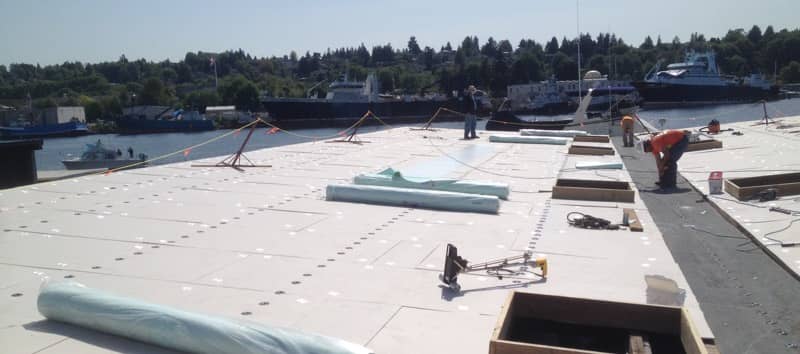 Since the technology was reintroduced to the U.S. roofing market in the 2008 time frame, Induction Welded membrane attachment has continued to gain market share in the industry. Currently, the technology applies to an estimated 5% of the roofing market. Below, you will find an overview of the history of the technology, as well as some benefits of using an induction welded membrane attachment system.
Since the technology was reintroduced to the U.S. roofing market in the 2008 time frame, Induction Welded membrane attachment has continued to gain market share in the industry. Currently, the technology applies to an estimated 5% of the roofing market. Below, you will find an overview of the history of the technology, as well as some benefits of using an induction welded membrane attachment system.
History
Induction welded membrane attachment was first introduced to the commercial roofing market in the late 1990s as an alternative to typical mechanically attached roof systems. At the time, the equipment was unrefined, and the process itself was expensive compared to the other methods on the market. The main component of this method is induction heating technology.
Induction heating is the process of heating an electrically conducting object (typically a metal) by electromagnetic induction, through heat generated in the object by eddy currents. An induction heater consists of an electronic oscillator that passes a high-frequency alternating current through an electromagnet. The rapidly alternating magnetic field then penetrates the object, generating the eddy currents which in turn heat the metal.
During a typical roof installation process, metal plates with a specialized coating are installed per standard methods. A thermoplastic roof membrane is then laid over the plates. A hand held induction heat tool is placed over the roof membrane at a metal plate location to weld the two components together. The induction heat tool transmits a calibrated electrical impulse, in seconds, to the metal plate heating it sufficiently to melt the backside of the roof membrane. Once heating is complete, a high performance magnet is immediately placed on the topside of the roof membrane over the metal plate locations. The magnet maintains the contact of the melted membrane backside to the coating on the metal plate until both the membrane and plate are sufficiently cool, forming a chemical bond. This last stage in the process takes roughly one to two minutes to complete.
Currently, it is believed that all suppliers of thermoplastic roof membranes offer induction welded membrane attached systems, supplied by roof fastening products suppliers, such as, SFS Intec, under the trade-name isoweld®. This is a highly differentiated and innovative “intelligent” induction welding tool which addresses many of the shortcomings of prior induction welding tools
Benefits
Many roof consultants and roofing contractors believe the induction welded membrane attachment method reduces labor up to 20% on larger projects. This membrane attachment method also addresses many of the objections associated with:
- Wind induced sheet flutter of typical mechanically attached roof systems
- Cold weather application restrictions for adhered roof systems
With isoweld® specifically, buildings owners, specifiers, and contractors are given an unparalleled calibration process which delivers a quality weld while imparting confidence within the roofing system. One of the largest differentiators in the calibration process is the fact that it is automatic, thus taking worker guesswork out of the equation. The isoweld® equipment also has superior adaptability with a handheld inductor to enable work under and around pipes and ductwork easily.
The induction welded membrane attachment method will continue to gain steam within the roofing industry over the coming years as more and more companies continue to adopt the process. If you have any questions, or would like to discuss your roofing project, please contact one of our roofing experts.
What other objections does the induction welded membrane attachment method address? Share your thoughts in the comments.
-1.png?width=500&height=271&name=FiberTite_Only%20(500px%20wide)-1.png)


-1.png)